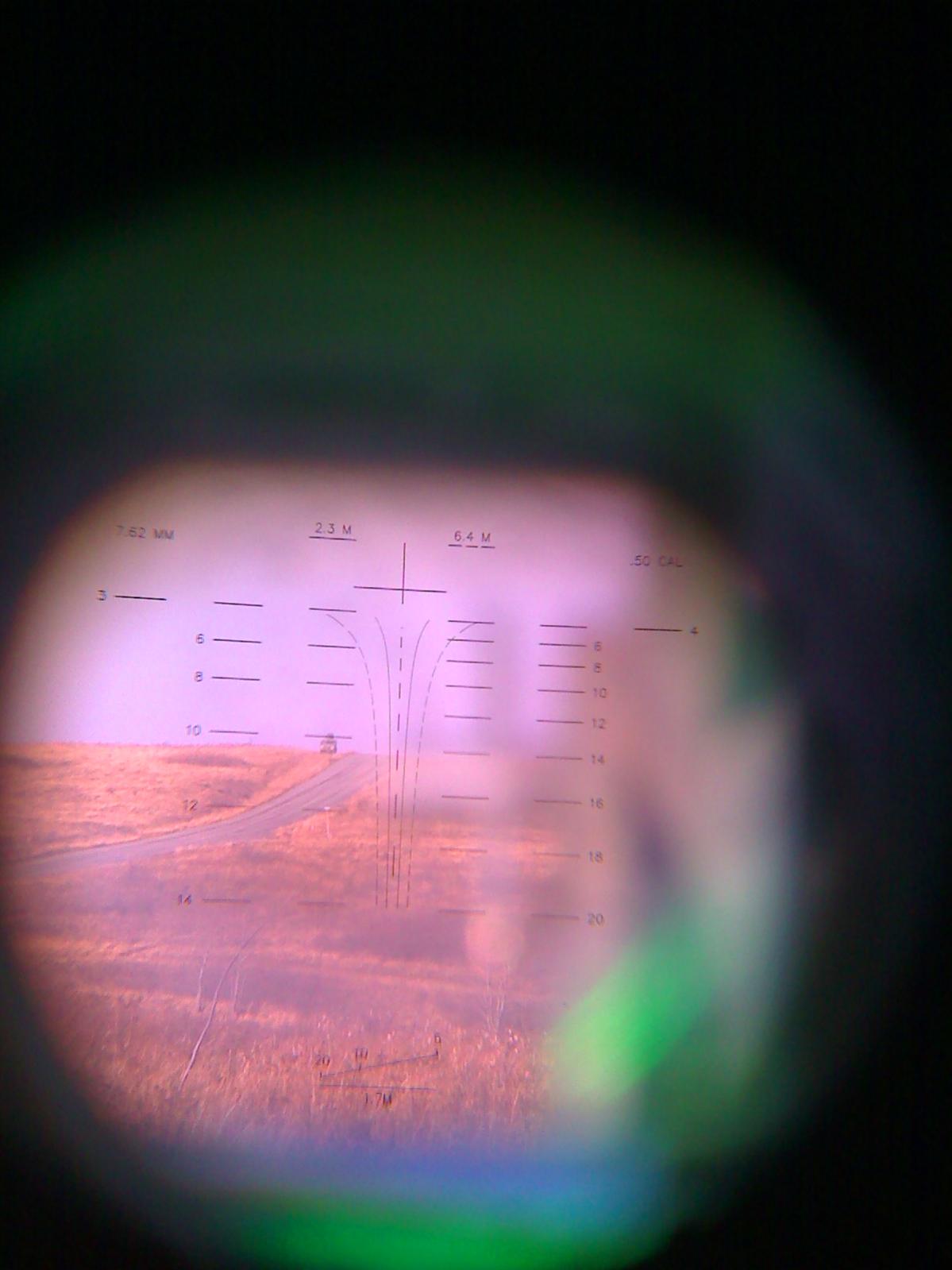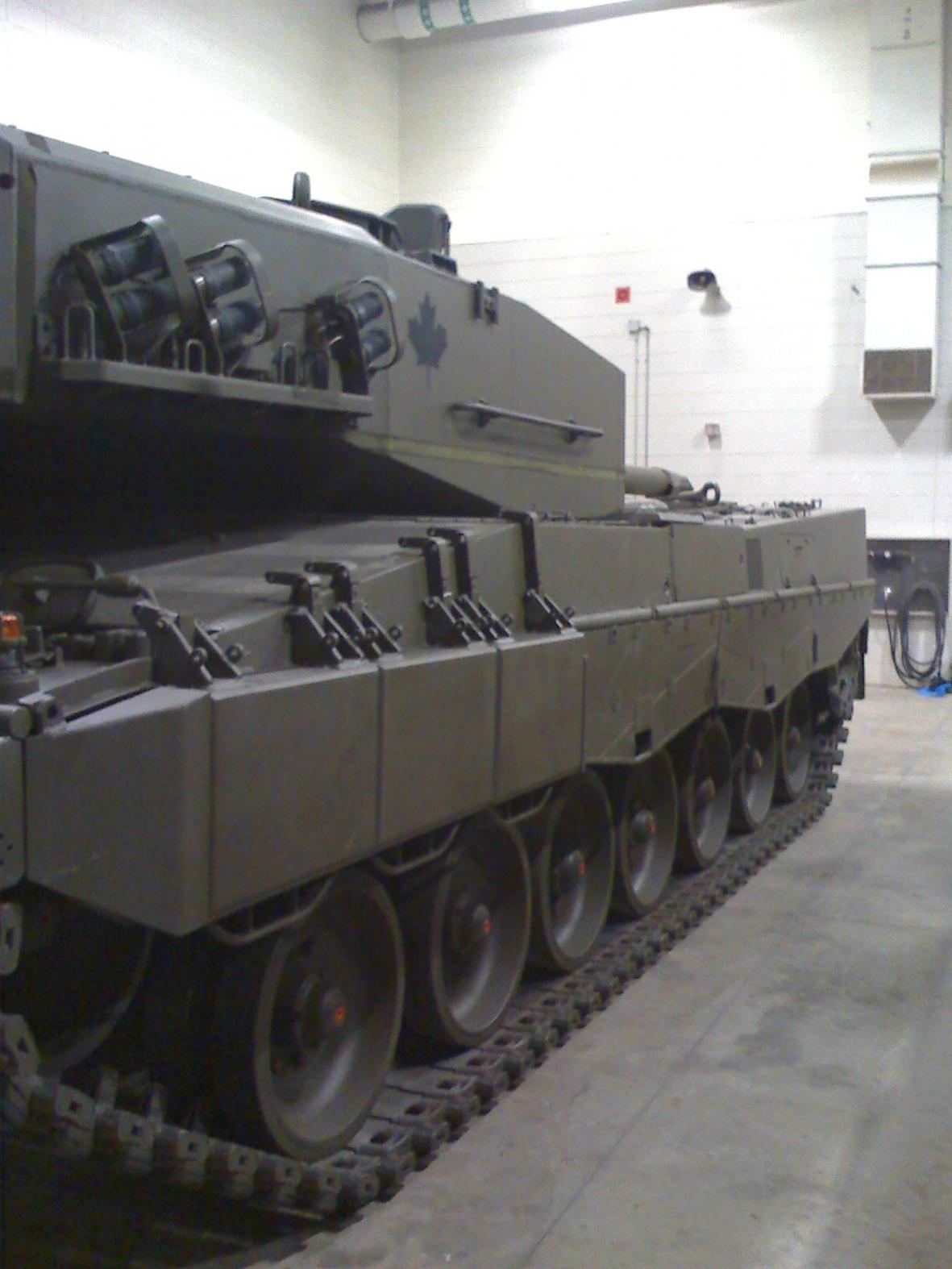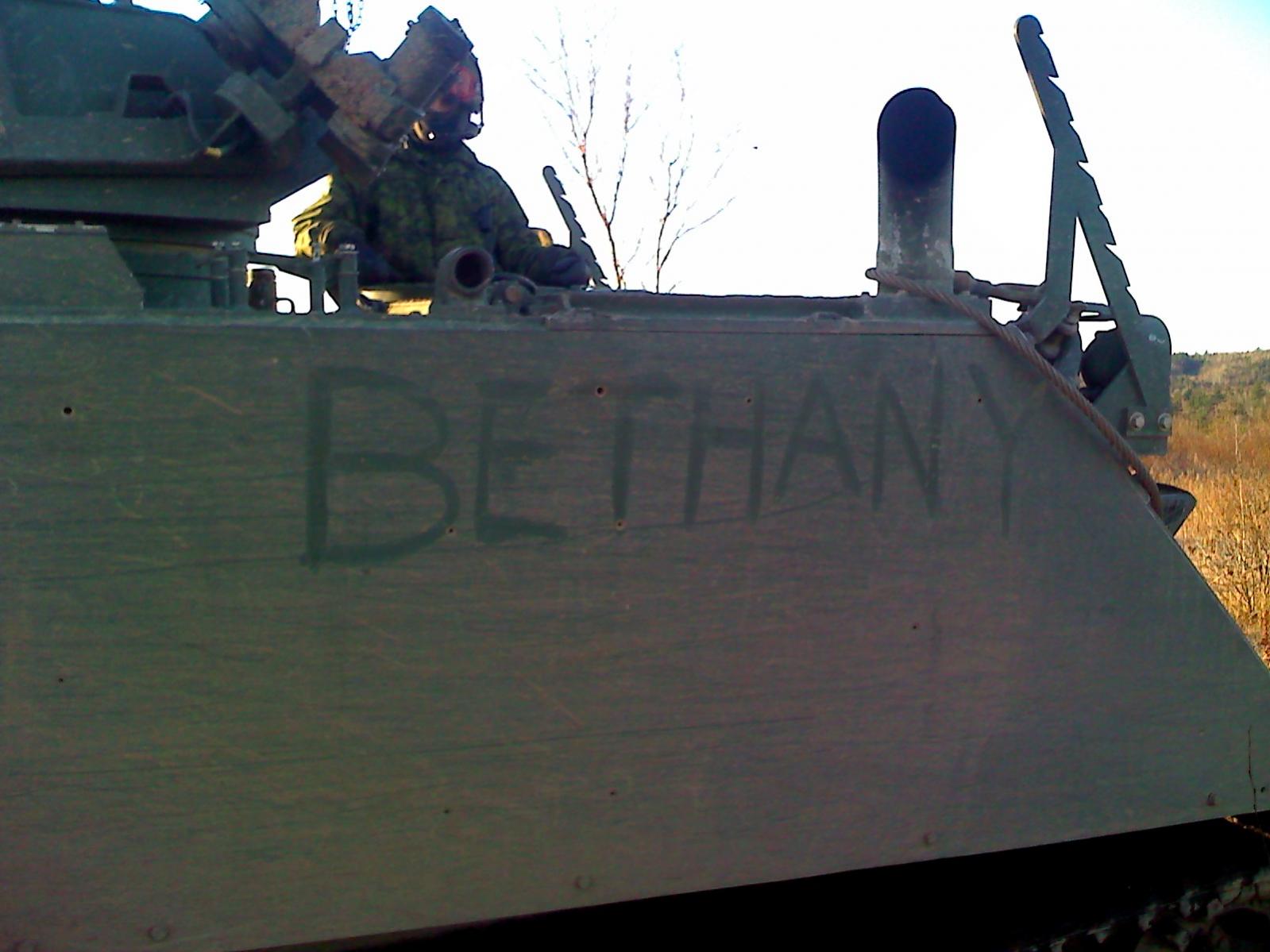-
Posts
594 -
Joined
-
Last visited
Recent Profile Visitors
The recent visitors block is disabled and is not being shown to other users.
RecceDG's Achievements
Newbie (1/14)
0
Reputation
-
I love the idea of no map updates at all, everybody working off paper maps, TeamSpeak radio SITREPS and contact reports only. The down side is that to pull this off, you really need somebody in the Battle Captain (if recce) or Coy 2IC (if inf or combat team) seat to pull this off - meaning a guy with no units who just runs the radio net and manages the battlespace. That's a pretty specialized skillset and a tough sell - no shooting for you! Plus radio procedure and drills become paramount. It's crazy how much the F5 map changes things. Radio traffic drops to nothing when you can just see the whole battle at a glance. Maybe the Yank BFT works this well for Blue SA. But Red SA I doubt very very much. DG
-
Here's a student learning what "tracks up to the world" means, as seen through the daysight of the 1m turret on a TLAV. Camera phone picture through the sight so not super high quality, but enough to get the idea. DG
-

Vehicles still driving into the drink...
RecceDG replied to Apocalypse 31's topic in General Discussion
Amen, brother. You have not felt fear until you feel your track slowing down, tell the driver to step on it, he says he has it boarded - and you look over the side and see a bow wave.... (about a km SW of Monument Woods) Not to mention broken headsets, mismarked maps, a driver insisting that "I can make it".... The AI does plenty of unrealistic and frustrating things, but driving into the water and getting stuck is not that unrealistic. DG -
Adding to this is the fact that most of your subordinates have a functioning brain and can be counted on to react to situations intelligently. If you are a new troop leader, you probably aren't the smartest crew commander in the troop either. A SB troop with one human and two to three AI doesn't act like an actual troop; it is more like a single callsign with a local reserve - more like being a cav trooper leading a string of remounts. The AI gunners can be deadly if faced head-on, but the AI just doesn't react well to flank attacks. It can be very frustrating troop leading that gang of idiots. DG
-
Having subsequently been an instructor, I guarantee that's the case. A Gagetown fog is unreal. 75m visibility, full stop. You can see the bushes immediately next to you, and everything else is a sea of grey. I can also say this - after phase training, a number of exercises in the training area, and having been an instructor, I now have 80% of the training area memorized. I don't need the map any more. Wainwright, Meaford - same deal. DG
-
No stab, power traverse (but it is kinda coarse - it's a toggle switch) manual elevation/traverse. I'd use the power traverse to scan and to slew onto target, but actual shooting used the hand cranks. It's a good turret for recce because the highest part of the vehicle is the sight box. A proper turret-down exposes a shoebox-sized box and that's it. And the optics are nice and clear. But shoot on the move? Hells no. DG
-
Everybody put your helmets on: war story time: On my Phase 4 (the course that teaches patrol commanding and troop leading) my confirmation trace for patrol commanding in the defensive. I have to take a two-car recce troop and establish an OP (plus all the associated battle procedure - get orders, issue orders, etc etc) and being a "confirmation trace", this is my final exam to see if I get to continue to the next portion of training. There are any number of ways for this to go pear-shaped, but there are two "instant fails". The first is not having eyes on the objective by the time specified in orders; the second, not knowing where your position was within 100m without reference to GPS. These traces are set up so there is just enough time - barely - to get all the steps done on time. There just isn't enough wiggle room in the schedule to soak up Murphy's Law. I have received orders, and per the drill, my patrol is going to do a preliminary move to a hide near where I expect to establish my OP. Once in the hide, I'll do a recce, find a place for the OP and alternate, mark them, and return to the hide to write and issue orders. Then the patrol will occupy the OP, and with the OP established, the trace ends and I get my assessment. But the second the patrol leaves the hide for the preliminary move, a thick Gagetown fog drops on us, and visibility drops to maybe 75m Our movement speed plummets, and I can no longer see any terrain features by which to navigate. Even the sun is hidden so I don't have an east/west reference, and we are traveling cross-country and along Gagetown's unmappable network of blacktracks so I can't even use "take the second left". We plod along like this for a while, and the little nagging voice in my head starts saying that something isn't right. What terrain I should be seeing - as much as I can see in fog this thick - doesn't look right. That voice gets louder and louder, and finally I pull out the compass and have a look. It says that the nose of the track - which I know is facing due north - is facing east. And I distinctly remember looking at the compass and thinking "wow, my compass is broken". No, no, that's not right. Compasses don't break. It must be all the metal in the M113 that I'm in throwing off the compass. So I have the driver stop the track, I dismount, and I walk a few steps away, watching the compass all the while. I fully expect to see the compass swing away from the track and start pointing in the direction I know is north. It doesn't. Oh shit - I really was going east. I somehow got turned around in the fog, and I have absolutely no idea where I am. All the instructor needs to do is ask "where are you?" and I fail the trace. On top of that, I somehow need to figure out a plan to unfuck myself and get back on my route, because precious time is bleeding away and if I don't get to that hide soon, I'll be late for observation established and that's a fail too. OK, so where was the point I last knew exactly where I was? Assume I turned east there. Now assume that I only turned east a moment ago. I'm somewhere in that pie piece of ground between those two points - and there's a major orange route running east/west just north of this bit of space. If I drive due north, I'll hit this route eventually, then I can turn left and follow it until I encounter something that pinpoints my location. Back to the track. Turn north. Drive. Keep a firm eye on the compass and ensure we stay pointing north. There's the orange route! Turn left. And after a km or so, I encounter a Gagetown graveyard and now I know EXACTLY where I am. And at that exact point, the instructor taps me on the shoulder and asks me where I am. Here. Very well, carry on. From there, I work out a new route sticking to major orange tracks, and just as I arrive at my hide location, the fog lifts. Sprint to the recce, find a spot, sprint back, issue orders off the top of my head, drive like madmen to the OP, and I get someone in the OP with 30 seconds to spare. Trace passed. Map and compass FTW. DG
-
It isn't an emphasized as much as it was back in the day before GPS, but we teach navigation via spacial recognition of key features on the map. The ability to look at a topo map and then understand what that looks like on the ground is invaluable. The standard once was "lacking GPS, when questioned, provide grid of own position to within 100m" - and getting it wrong was an instant fail on the trace. That doesn't help you in the open desert as much as it does in Gagetown or Wainwright, but it is a very useful skill to have. I had no problems navigating in Ft Irwin day or night. DG
-
Yes. The "by the book" square combat team is an infantry coy, a tank sqn, a FOO, and an engineer field section. The tank sqn brings its echelon, the inf coy brings its CP (Queen Mary) This is one of those formations developed the hard way during WW2. It allows cycling though fresh coys and sqns and keeping up the momentum depending on how the situation is developing. We kept it through the Cold War and it is still the primary combined arms building block. In theory. In practice you do what you need to do (for example, the three car recce patrols used in Afghanistan vice the doctrinal two-car patrols) to get the job done. But the basic construct is the square combat team. The book says either the inf coy OC or the tank sqn OC can be in charge. The way we were taught and practiced was with the inf coy OC as the combat team commander. My Corps prejudices notwithstanding, this is probably the right choice: the actual quick attack tends to have two phases to it (not in terms of orders phases, but in the way it plays out) You have the tank fight, which starts with the initial contact and plays through the establishment of the firebase, the obstacle line breach, and the assault, and then you have the infantry fight, which starts with the dismount and ends with the objective secure and the position consolidated. You can lead the tank fight from a LAV, but you can't lead the dismounted infantry fight from a tank. That being said, much depends on the personalities and skill levels of the two majors involved, plus the nature of the enemy and ground. And nothing is graven in stone either. If the attack was on a prepared position with a particularly tricky obstacle belt to breach, it is conceivable that the engineer resources would be beefed up and maybe an engineer major takes command of the combat team for that specific assault (to ensure the engineer bits come off correctly). Combat Teams are not fixed formations; they are functional groupings. By the book, a Canadian Armoured Regiment has 4 tank squadrons and a regimental recce troop (C/S 60) In the 80s and 90s (maybe even earlier) partially because there weren't enough tanks to go around, and partially because there weren't any Div recce regiments to keep the recce skillset and personnel deep enough, an armoured regiment had 3 tank squadrons (A-C) and a recce sqn (D) plus the regimental recce troop (60) Then as we thought we were going to phase out the tanks, all regiments converted to recce entire less the Strats who kept a rump tank sqn, and 60 was converted to zero strength. And now the tanks are coming back on, and the plan for how they are going to be distributed is still in the works. So we've gone from tank heavy, to recce heavy, and we're moving to something in-between. So where the recce force comes from that screens the square combat team is anybodies guess. A reasonable assumption is that you have a battle group consisting of an infantry Bn and an armoured regt with 3 tank sqns and a recce sqn, plus a battery of guns and an engineer troop. That gives you enough moving parts to have a combat team in the fight and two in reserve, plus enough recce resources to screen everything. DG
-
*snort* those are great. I feel your pain - I'm at (what is effectively) a Div HQ. In the 7 shop at that. Nobody is ever happy to see me. DG
-
Here's some pics: 3 views of the new Leo2 in green (shame about the one idiot blocking the view). A troop of Coyotes on the pad (note field-expedient callsign markers on the turrets) and a close-up of 23, my TLAV "BETHANY". Once upon a time, we had enough vehicles and the VOR rate was low enough that a crew would be assigned one vehicle and you could paint the callsign on. Nowadays, vehicles get rotated around and it is more common to see removable placards, callsigns marked out with gun tape, chalk, or even scratched into the dirt. Vehicle naming is kinda old school and doesn't always happen. If it does though, 99% of the time the name starts with the first letter of the sqn. I have had ARRAS in A Sqn PEIR (and again in A Sqn Armd School) BETHANY in B Sqn Armd School, DASTARD in D Sqn WR, and THUNDERBUS in D Sqn WR (the driver knocked the exhaust system off and it was very distinctive) If you want to make my wife over the moon, make the Leo2 be a B Sqn tank (21, 22, 23, or 29) and name it BETHANY. And if you want to make it really cool, stick one of these on the front fender: http://www.veteran-graphics.com/images/image_canadian_military/royal_canadian_dragoons_s_small.jpg DG
-
There aren't a lot of Leo2s in Canada yet. The ones we had in Afghanistan were lend-lease from Germany. I've seen the new ones - I was in Gagetown for the official rollout (and have a picture somewhere). It is basically the same paint scheme as the Leo1 (solid green), but the leaf on the turret doesn't have the white outline. You can use whatever font you want for the callsign, because I don't think anybody has painted them on yet. Too bad you can't alter the model itself; the big Afghan-era Canadian vehicle feature is the water bottles taped to the antennas. DG
-
Ohhhhh... now I get where the confusion is coming from - your picture is a monument. A portion of our retired vehicle fleet are converted to monuments and delivered to whatever units have space to host them. These vehicles are stripped down, welded shut, and then the gaining unit can do whatever they want with them. I have seen any number of monument vehicles painted very strangely. Sometimes because somebody had a Good Idea; sometimes because the RSM got tired of how shabby the thing looked and sent some privates out with some paint and instructions to make it look presentable. And monuments lack things like the CFR plates and whatnot because they are decommissioned. This is more typical: http://i698.photobucket.com/albums/vv345/Alf-Adams/Lahr%20Germany%20vehicle%20display%201978/M113withTOW.jpg This one I note has the leaf on the front... I've never seen that before on an operational M113; it must have been a 5 Bde (Germany) thing or maybe it was phased out before I got around (1987 onward). Same with the painted-on CFR on the hull. I see too that this picture (1978) has the red/white flag... again, all I've ever seen is subdued flags. This one here is more recent: http://www.ipmstoronto.com/articles/military-vehicles/M113/M113s%20At%20St%20Remy%2012.jpg It has the grouser rack on the outside that was added in the early 90s - see the paint? Another angle: http://www.ipmstoronto.com/articles/military-vehicles/M113/M113s%20At%20St%20Remy%2006.jpg I note this one doesn't have the rubber side skirts... those are always being scraped off on trees, buildings, other tracks... Note CFR plate and yellow bridge classification circle (I've seen both yellow and subdued here) Rear view - note callsign and NO giant yellow triangle. http://www.ipmstoronto.com/articles/military-vehicles/M113/M113s%20At%20St%20Remy%2013.jpg This one is an MRT - note callsign 88B and the EME flag on the front of the hull (maintainers paint that flag on everything) http://www.ipmstoronto.com/articles/military-vehicles/M113/M113s%20At%20St%20Remy%2016.jpg And just to muddy the waters, this one has the callsign in a completely different font. http://www.ipmstoronto.com/articles/military-vehicles/M113/M-113%20Fitter%27s%20Vehicle%2004.jpg That's nontypical though - the usual callsign font I always saw was that square-ish stencil. DG
-
Like the Col. said, tac sign is wrong. It needs the CFR licence plate - examples on Armoured Acorn are generally correct. One front, one rear, and if you are going to keep the CFR painted on the hull they should match. Font on callsign is wrong; it is a stencil and it tends to be tall and narrow. But you are getting close. DG






